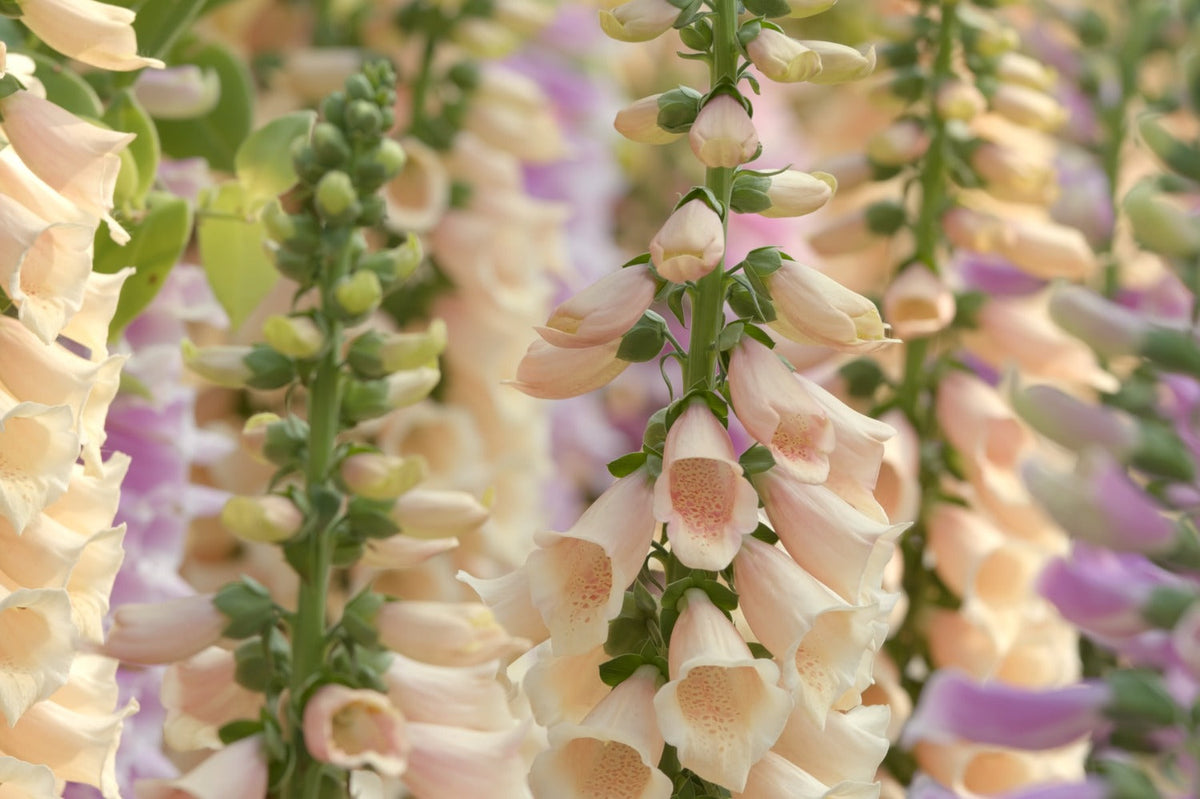
Sow biennials in July: digitalis or foxglove
|
Tijd nodig om dit artikel te lezen: 2 min
|
Tijd nodig om dit artikel te lezen: 2 min
You sow biennials, almost counterintuitively, in the summer. That feels strange, because you sow most flowers in the spring, right? Sometimes, but not always. Biennials are exceptions that you sow from June to August . Why? Because they need a bit more time and will only flower next year. Here we show you how to sow digitalis or foxglove, for a border full of flowers.
Let us start by explaining the difference between annuals and biennials. Biennials are plants that are sown in the summer, then grow, develop leaves and only form flowers after the winter, the following year. Annuals are a bit different in that respect, because they have to get everything done in one season. Annuals are sown in the spring and flower that same summer. Biennials simply need a little extra time. And perhaps that is the best thing about biennials. You are already dreaming ahead a little.
You can sow many biennials from July onwards, but here we will limit ourselves to the most popular, the biennial foxglove. Digitalis or foxglove is fantastic to have in the garden. They do well in a spot in the semi-shade. Or if you have space between trees in your garden, feel free to put them there, that is where they prefer to grow. It is a type of forest plant that likes to grow on the edge. And yes, digitalis is poisonous, so be careful with children or nibbly pets. But otherwise it is just a very nice addition to your garden, with their bell-shaped flowers that hang down. They are available in many colours and one grows a bit higher than the other. Biennials that are loved by everyone.
Biennials can be perfectly sown in the open ground, between your plants in the border. What's more, if you already had digitalis, there is a good chance that they have already sown themselves after flowering. They germinate easily and in this way you can gradually expand your collection. If you don't have them yet, you will have to sow.
You can sow in a seed tray, if the borders are already completely full and seeds do not even get a chance to germinate because of the perennials that take up everything. Fill the seed tray with airy seed soil and sprinkle the very small seeds superficially on the soil.
Digitalis is a light germinator, so absolutely do not cover with soil, otherwise you will not see any seedlings. Press the seeds lightly, so that they have contact with the substrate.
Water by placing the container in a bowl of water and letting it absorb moisture itself. This way the tiny seeds do not wash away.
Just leave the container outside, but not in full sun. A spot in partial shade is fine. Water occasionally and wait patiently for the first plants. It can easily take two to even three weeks before you see a sign of life.

